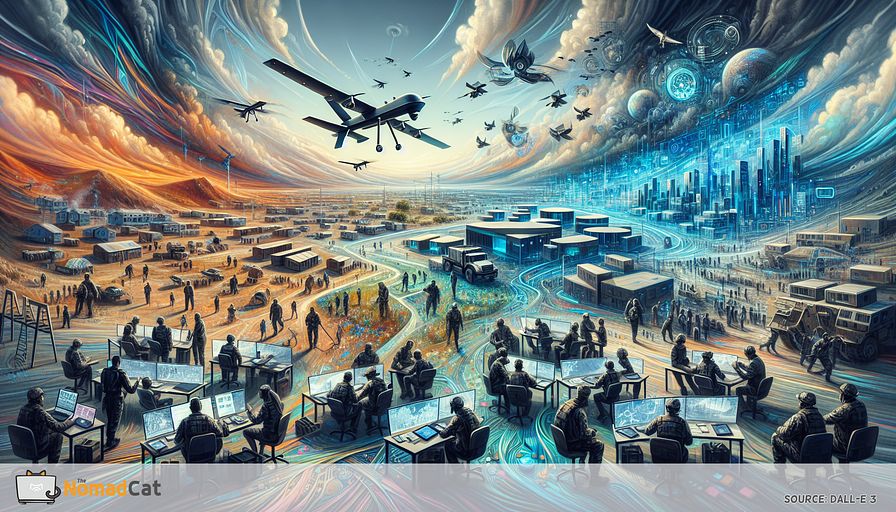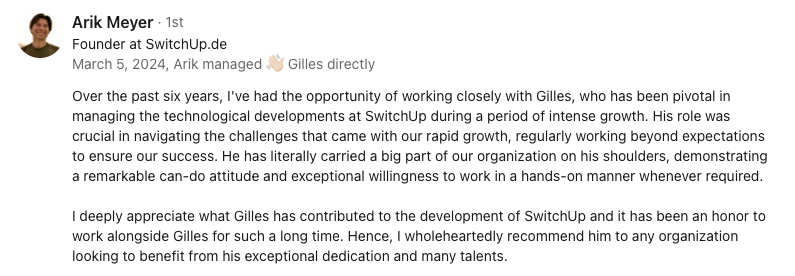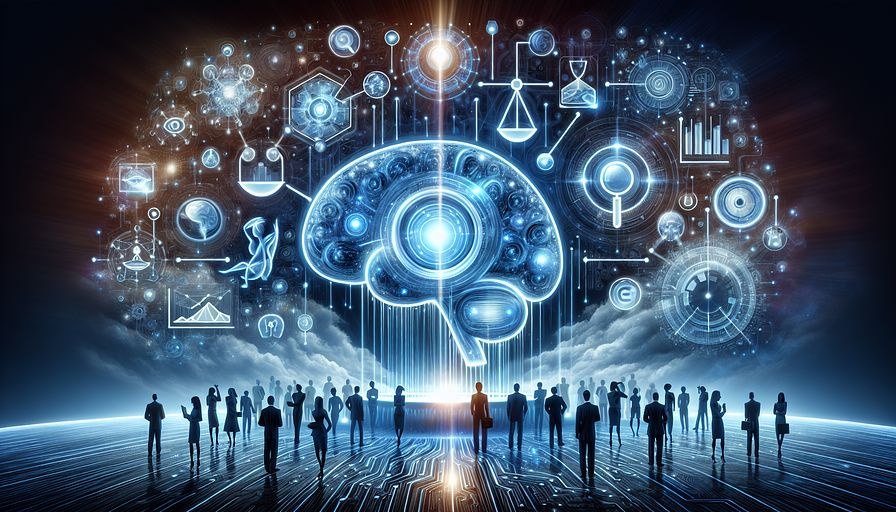Abstract:
This article explores the pivotal role of technology in enhancing disaster relief efforts, detailing how innovations are revolutionizing the way aid is delivered in crisis situations. From drones capturing real-time data to mobile applications facilitating efficient communication, technology is providing responders with the tools they need to act swiftly and effectively. We highlight case studies where tech solutions have significantly improved logistical operations, resource management, and victim support during natural disasters and emergencies. The piece also underscores the importance of collaboration between tech companies, NGOs, and governments in developing resilient systems that preempt risks and mitigate disaster impacts. Furthermore, the article touches on the challenges of implementing technology in complex emergency scenarios and the ongoing efforts to create more adaptable and user-friendly solutions. For technology directors and engineers, understanding these tech-driven strategies offers insights into the possibilities for innovation in humanitarian aid and the potential for technology to drive meaningful social impact.
The role of technology in disaster aid
Picture this: a massive hurricane has just torn through a town, leaving chaos in its wake. In past decades, relief efforts would have involved a lot of manual guesswork and slow-moving aid. But today, technology plays a crucial part in making disaster aid faster, smarter, and more efficient.
Tech innovations are not just bells and whistles—they are game-changers in how we respond to disasters. From drones giving us real-time aerial views to mobile apps ensuring we can communicate despite downed cell towers, tech has turned the tide in disaster relief efforts. These advancements help us pinpoint exactly where help is needed and ensure that resources reach those who need them most, reducing suffering and potentially saving lives.
Think of it this way: technological advancements have revolutionized disaster response protocols. We've moved from a largely reactive approach to a proactive one. The magic happens in that tech helps us anticipate needs and coordinate responses with unmatched precision. Whether it's through improving logistical operations, enhancing victim support, or fostering collaboration between different agencies, technology is the unsung hero that makes the chaos a bit more manageable.
So, strap in as we explore how these tech marvels are making the impossible seem almost casual. From capturing crucial data with drones to the elegant simplicity of a mobile app, it's fascinating to see how the tech world is stepping up when everything else seems to be falling apart. Let's get into it!
Drones capturing real-time data
It’s hard to believe, but those buzzing drones you see capturing wedding videos can also save lives during disasters. Imagine a scenario where a natural calamity has disrupted all ground-based communication and visibility is a mess. That's when drones zip in to offer much-needed aerial perspectives and real-time data, turning chaos into actionable information.
Think of drones as our eyes in the sky. These flying marvels can quickly survey vast areas that would otherwise take rescue teams hours, if not days, to cover. Equipped with high-resolution cameras and sensors, drones capture crucial aerial imagery and environmental data, which can be instantly analyzed to prioritize rescue efforts. Time is of the essence in disaster response, and drones keep us one step ahead.
Take, for example, the 2017 hurricanes in Puerto Rico. Drones were deployed to map out flood-damaged areas and assess the condition of infrastructure like bridges and roads. This instant visual data allowed rescue teams to strategize more efficiently and allocate resources where they were most needed.
Real-world examples and case studies
- 2015 Nepal earthquake: Drones provided high-resolution images of affected areas, allowing for a swift and targeted response. They helped map landslide-prone regions, ensuring the safety of rescue teams and villagers.
- Australian bushfires: In recent years, drones have been essential for detecting hotspots and monitoring the spread of fires, enabling faster firefighting responses and evacuation plans.
These examples give a glimpse into the power of drone technology in chaotic, disaster-stricken environments. They provide unmatched visibility and real-time information, which traditional methods can't always deliver. And the best part? Drones can often reach areas that would be too risky for humans, ensuring everyone stays out of harm’s way.
In short, the role of drones in disaster aid isn't just a cool sci-fi idea—it's a practical, life-saving application of modern technology. Isn't it fascinating how a device used for capturing family photos can turn into a hero when disaster strikes?
Mobile applications facilitating communication
When disaster strikes, clear and swift communication can make all the difference. That’s where mobile applications come into play, transforming chaos into coordinated action and ensuring everyone— from victims to volunteers—stays in the loop.
Imagine this scenario: a natural disaster has knocked out power lines and cell towers, leaving communities isolated. Mobile apps designed for disaster response fill this communication vacuum with ingenuity. These apps create a mesh network or leverage satellite connectivity to ensure that no message goes unheard.
One of the key advantages of these mobile applications is their ability to synchronize efforts between various stakeholders—NGOs, government agencies, and ground teams. Think of it as the ultimate group chat for disaster response, making sure everyone knows what's happening in real-time. This level of coordination means resources are deployed efficiently, reducing redundancy and speeding up aid delivery.
Examples of effective mobile applications
Let's zoom in on some specific examples to see these apps in action:
- Bridgefy: In times when the internet is down, this app allows users to send messages through Bluetooth, creating a peer-to-peer network. It was notably used during the 2019 Hong Kong protests and has since become a go-to for disaster-stricken areas.
- Zello: Often described as a ‘walkie-talkie’ app, Zello enables voice communication over Wi-Fi or cellular data. It was widely used during Hurricane Irma in 2017 to coordinate rescue efforts, proving that a simple voice message can be a lifesaver.
- Ushahidi: Originating from Kenya, this app allows users to report incidents through their phones, which are then plotted on a map. This crowd-sourced data is invaluable for identifying hotspots needing immediate attention.
Each application offers unique features, but their common goal is to cut through the noise and provide a clear communication channel. Whether it's messaging under adverse conditions or mapping out urgent needs, these apps bring a level of organization that's vital in emergency scenarios.
As they say, necessity is the mother of invention. And in the case of mobile apps tailored for disaster relief, that invention not only facilitates communication—it helps save lives. Isn't it incredible how a little bit of software can make such a monumental impact?
Tech solutions improving logistical operations
When disaster strikes, getting aid to the right place at the right time can feel like threading a needle in a hurricane. That's where tech solutions swoop in to save the day, particularly when it comes to improving logistical operations. Let’s talk about how these digital superheroes are optimizing resource management, tracking supplies, and ensuring timely delivery. Advanced algorithms and AI play a pivotal role in orchestrating this complex dance.
Picture a scenario where resources are scattered across various locations, and each second counts. Advanced algorithms can swiftly analyze data to predict where aid is most urgently needed. They factor in multiple variables—such as road conditions, weather forecasts, and current stock levels—to map out the most efficient routes for delivery. The days of manual route planning are long gone, and frankly, good riddance! Now, we have precision and speed on our side.
The power of AI in logistical management
AI is like the genius behind the curtain, orchestrating the whole show. These systems forecast demand, ensuring that supplies like food, water, and medical kits are pre-positioned in disaster-prone areas. This proactive approach minimizes wastage and improves response times. Imagine having an AI assistant that knows what you need before you even ask—it's like magic, only real.
AI also shines in inventory management. Through real-time tracking, it can oversee the distribution of items, ensuring no single resource runs dry while others pile up unused. This keen oversight ensures that aid is distributed equitably and efficiently, reducing the risk of bottlenecks.
Case studies showcasing tech-driven logistics
- Hurricane Harvey, USA: During this 2017 disaster, IBM's Watson AI was used to analyze social media posts and news reports, flagging areas needing immediate attention. This data was then used to prioritize the deployment of resources, significantly speeding up the relief operations.
- Rohingya refugee crisis, Bangladesh: The World Food Programme employed blockchain technology to track food assistance deliveries. This technology reduced fraud and ensured that aid reached its intended recipients, illustrating how digital transparency can save lives.
Each case highlights the transformative power of technology in logistical operations. Advanced algorithms and AI don't just streamline processes; they become a force multiplier in disaster scenarios. And while it might sound like something out of a sci-fi novel, the reality is that these technologies are saving lives right now.
In essence, tech solutions are turning what used to be a nightmarish logistical puzzle into a well-oiled machine. They bring the clarity and efficiency needed to tackle the chaos, making sure help arrives precisely when and where it’s needed. And hey, if that’s not tech magic, I don’t know what is.
Victim support through technology
After the initial waves of chaos have subsided, what happens next? Here’s where technology steps in once again, providing an essential lifeline for victims in the aftermath of disasters. We’re not just talking about immediate aid; we're looking at a holistic approach to mental health, long-term recovery, and emotional well-being. So, how exactly are these tech tools and platforms making a difference?
First up, let’s discuss psychological support. For many victims, the trauma doesn't end when the floodwaters recede or the ground stops shaking. Mobile applications and online platforms have become more than just tools—they’ve evolved into genuine support systems. Apps like Calm and Headspace offer meditation and mental health exercises tailored for trauma victims. Meanwhile, platforms like Talkspace provide virtual counseling services, ensuring that professional help is just a click away. These tools help to bridge the gap for those who might be unable to access traditional forms of therapy due to logistical constraints or sheer volume of need.
But it’s not only about mental health. The tech world has been equally inventive in facilitating long-term recovery. A platform like Humanity Road offers real-time data and resources on safe shelters, food supplies, and medical assistance. By consolidating information into a singular, easy-to-navigate interface, it gives disaster victims a one-stop-shop for their recovery needs.
And then there are innovations like Blockchain for Aid, which aim to make financial assistance more transparent and efficient. Utilizing blockchain technology, these platforms ensure that financial aid reaches the right hands without getting lost in bureaucratic red tape. Not only does this speed up the process, but it also reduces fraud, making sure every dollar makes a difference.
Transformative tools in action
Let’s take a closer look at how some of these technologies are making an impact:
- Safe & Well, American Red Cross: This feature allows disaster survivors to register themselves as “safe and well.” It provides peace of mind to concerned family and friends who can easily check the status of their loved ones.
- Google Person Finder: Developed by Google, this tool helps people reach out to or find missing persons during disasters, effectively acting as a real-time, crowd-sourced database.
- Crisis Text Line: This text messaging service provides free, 24/7 support for people in crisis. It's particularly beneficial for younger generations more comfortable with text-based communication.
What’s remarkable here is that these tools don't just offer immediate relief—they have a long-lasting impact on the rehabilitation process. By addressing both logistical and emotional needs, they help create a more holistic recovery experience for the victims.
In the end, it’s clear that the role of technology goes beyond just the nuts and bolts of disaster response; it plays a pivotal part in the emotional and psychological recovery, providing much-needed support during incredibly challenging times. And if you ask me, that’s the kind of tech magic we need more of.
Collaboration between tech companies, NGOs, and governments
When it comes to handling disasters, the motto should be “the more, the merrier.” I’ve seen firsthand how partnerships between tech companies, NGOs, and governments can build resilient systems that save lives and accelerate recovery. The synergy from these collaborations ensures that we’re not just throwing spaghetti at the wall to see what sticks—instead, we’re leveraging unique strengths to create solutions that work seamlessly.
Think about it: tech companies bring cutting-edge innovations and resources, NGOs have boots-on-the-ground experience and agility, and governments provide scale and regulatory support. Together, these entities can craft holistic approaches to disaster preparedness and response. For example, during Hurricane Maria’s aftermath in Puerto Rico, Tesla worked with local authorities and NGOs to deploy solar panels and batteries, restoring electricity to critical infrastructures such as hospitals. It was a game-changer, no doubt.
Examples of successful collaborations
There are numerous instances where these collaborations have turned chaos into coordinated action:
- Project Loon by Google: In partnership with AT&T and the Federal Communications Commission (FCC), Google deployed high-altitude balloons to restore internet service in hurricane-hit areas of Puerto Rico, ensuring that communication lines remained open during critical times.
- NetHope’s Connectivity Initiative: This consortium of tech giants like Microsoft and Cisco, alongside various NGOs, provided emergency Wi-Fi and connectivity solutions to disaster-affected regions. They enabled rapid information sharing and coordination amongst relief agencies during emergencies like the Nepal earthquake.
- UNICEF and IBM’s drone project: IBM’s drones were used in partnership with UNICEF to deliver medical supplies to remote areas in Malawi. This operation enhanced the efficiency of health interventions, ensuring timely delivery of critical medicines.
These examples show that when the tech world, NGOs, and governments join forces, the result is more robust and agile disaster response systems. It’s like forming an Avengers team but for disaster relief—each player brings their superpowers to the table.
From my perspective, fostering these partnerships is not just smart; it’s essential. When we pool our resources and expertise, we’re better equipped to anticipate needs, delegate tasks efficiently, and, ultimately, save more lives. It's proof that teamwork makes the dream work, especially when the stakes are incredibly high.
Challenges of implementing technology in emergencies
While technology undoubtedly brings many benefits to disaster aid, it also faces numerous challenges during implementation, especially in complex emergency scenarios. Let’s tackle some of these hurdles head-on.
Adaptability is often a major issue. Each disaster scenario is unique, and what worked in one situation might not be effective in another. Technologies must be flexible enough to adapt to various environmental conditions, from floods to earthquakes, without compromising their functionality.
Next up is usability. Many technological solutions, despite being innovative, can become cumbersome if they're not user-friendly. Imagine navigating a sophisticated software interface when you’re already in a state of panic—no thanks! We need solutions that are intuitive and easy to use, even for those not tech-savvy.
Another point to consider is the infrastructure. Disasters often strike hardest at places with fragile or non-existent infrastructures. Implementing high-tech solutions in such areas can be like putting a jet engine in a bicycle. We need to ensure that tech solutions can function independently of robust infrastructure, possibly through self-sustaining systems like solar-powered units.
Overcoming these challenges
So, how do we navigate these obstacles? Here are a few strategies that can help:
- Field testing and rapid prototyping: Before full-scale deployment, field-test technologies in diverse environments. Rapid prototyping allows quick iterations based on feedback, ensuring the final product is adaptable and effective.
- Training programs: Implement user-friendly interfaces and provide hands-on training for local communities and first responders. This can significantly enhance usability and speed up the adoption of new technologies.
- Infrastructure-independent solutions: Develop technologies that rely minimally on existing infrastructure. Solar-powered systems, satellite-based communications, and offline functionalities can make a big difference in isolated or heavily damaged areas.
By addressing these challenges head-on and considering the real-world conditions of disaster zones, we can improve the effectiveness of tech-driven relief efforts. After all, a little bit of pragmatism goes a long way in transforming futuristic ideas into life-saving solutions.
conclusion and future outlook
As we wrap this up, it's clear that technology has become an indispensable ally in disaster aid. From drones capturing crucial real-time data to mobile apps facilitating seamless communication and AI-driven solutions optimizing logistical operations, tech innovations have quite literally transformed how we respond to and manage disasters.
But let’s not get too comfortable. This field is evolving continuously, with new developments and innovations cropping up almost daily. The future promises even more dazzling tech marvels—imagine augmented reality assisting in real-time rescue operations or AI predicting and mitigating the effects of natural disasters before they even hit. The potential to effect social change and save lives is immense and growing.
Looking ahead, one thing is crystal clear: collaboration will be key. Tech companies, NGOs, and governments must continue to work together not just to innovate but to ensure that these innovations reach those who need them most. It’s about pooling resources, knowledge, and passion to drive meaningful change.
So, let’s keep pushing boundaries, testing new ideas, and coming together as one community. Whether you’re a tech director, engineer, or just someone passionate about making a difference, there’s a role for everyone. Because when tech and humanity join forces, even the most daunting challenges seem more manageable. And isn’t that the kind of magic we all want to be part of?
call to action for tech directors and engineers
Alright, tech wizards and code maestros, here's where you come in. The future of disaster relief needs your ingenuity, your drive, and your expertise. You hold the keys to developing life-changing technologies that not only respond to crises but also foresee and mitigate them. It’s time to leverage your skills for a greater good.
Consider diving into areas where your expertise can make the biggest impact:
- Data analytics: Harness big data to predict disaster patterns and enhance early warning systems.
- AI and machine learning: Develop intelligent systems that can optimize logistics and resource distribution in real-time.
- Mobile technology: Innovate communication tools that can withstand and operate independently during catastrophes.
Remember, tech isn't just about the latest gadgetry—it's a powerful tool for social responsibility. So, let’s put on our superhero capes, sprinkle some coding magic, and make the world a bit safer, one brilliant idea at a time. Because when we combine tech and heart, there's nothing we can't accomplish. Let's get to work!














